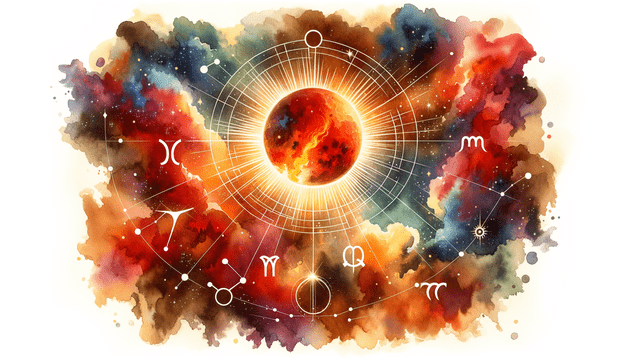House Systems
Equal House Systems
Sign-house system is one of the most simplified systems of houses still in use. Here, the Ascendant is considered only to define the rising sign and the first house begins at this sign’s zero degrees. Each following sign corresponds to the following house until the circle is complete. This system was the main system in Hellenistic tradition of Astrology and is still in use in Vedic Astrology.
Equal house system also divides the ecliptic in twelve pieces of 30 degrees, but the first house cusp is defined by the Ascendant or the eastern point of sunrise. This system is mainly used today in higher latitudes, especially above 60 degrees, where the Placidean system is quite distorted. In both of these systems, Midheaven or the highest point in the chart (MC) does not represent a 10th house cusp. Instead, it moves around any of the houses above the horizon.
Quadrant House Systems
Quadrant house systems divide the houses by four points – Ascendant, Nadir (Imum Coeli), Descendant and Midheaven (Medium Coeli). We call them the angles of each horoscope as they represent strongly accented houses where every planet gets special strength of influence in a person’s life. We will only mention some of them here, relevant for our work here, or commonly used in different astrological approaches today.
Porphyry’s and Regiomontanus
The simplest quadrant house system is Porphyry’s system which divides each quadrant of the ecliptic into three equal parts. It represents the base for all other quadrant house systems although their exact points are calculated differently. If the celestial equator is divided into twelve, and these divisions projected on the ecliptic, we get Regiomontanus system. It is mostly out of use at this time, but it was an important predecessor of the most commonly used system in modern Western Astrology – Placidus system of houses.
Placidus
The Placidus house system is based on each degree of the ecliptic moving from nadir to the horizon, and from the horizon to the Midheaven. The main problem this system has to face is in higher latitudes, because certain degrees never touch the horizon and planets falling in them cannot be assigned into houses without extending the system. If you create a chart for some distant northern city, you will see that the distortion “swallows” the chart and makes is impossible to use houses at all, when all you have are two large houses, and those standing next to them.
Meridian
Although there are other house systems that were important at some moment in history, these are the ones that will be relevant for our work. This list wouldn’t be complete without a truly special entity – Meridian house system, which divides the celestial equator in twelve pieces of 30 degrees and projects them to the ecliptic along the great circles containing the North and the South celestial poles. Although you will probably rarely use it, this house system can truly come in handy in relocation astrology.




